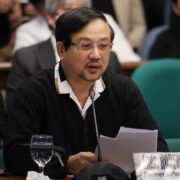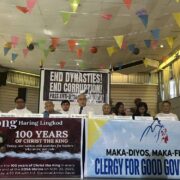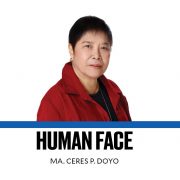Critical thinking in a dissonant world

When our Araling Panlipunan teacher recently approached me for advice on how he could teach current events in an unbiased way, the question struck a chord with me. His dilemma highlights the pressing need for educators to learn how they can guide students to navigate contentious subjects amid today’s dissonant, and oftentimes, polarizing landscape.
The first instinct of some teachers and parents is to shy away from tackling controversial issues with children. Much of this stems from the fear that they will lose control of the conversation or that they will be confronted with difficult questions they do not have ready answers to. However, it is important to assume that kids these days are already constantly exposed to these topics online and require someone to properly process it with them. If we aim for young people to actively shape and contribute to society someday, then we must be prepared to facilitate their development of a nuanced understanding of the spaces they belong to.
Guide them to critically think about issues and their biases.
Any productive discussion about a polarizing topic entails starting discussions with a common foundation of facts, before weighing in on the issue. The biggest challenge for educators and parents is to be able to present multiple perspectives on any issue to avoid the trap of a single narrative while also emphasizing the importance of facts. With social media as their primary source of news, it is crucial for young people to learn early how to differentiate between objective (fact-based) and subjective (opinion-based) information.
Equally important is to help them understand that everyone comes into a conversation with a particular bias and that we often move in an echo chamber. From our algorithms to our social circles, it is human nature to seek out the company of those who think like us as well as ideas that match our own point of view. Being able to recognize both personal and societal biases, and exploring with an open and inquiring mind their implications on the larger discourse, is another key skill.
Encourage students to explore the “gray space.”
Lorena Germán, in her book “Textured Teaching,” emphasizes the importance of the “gray space”— an area of discussion where multiple viewpoints are acknowledged, analyzed, and more importantly, can coexist. This means creating an atmosphere where young people are encouraged to dissect a range of perspectives and synthesize conflicting information.
In the classroom, structured debates and open discussions are effective ways to encourage students to articulate their own views while critically listening to others. It pushes them to defend their positions, but perhaps more importantly, to question and revise their views in light of new information or compelling arguments from their classmates. This can be particularly impactful because students are often more open to ideas presented by their peers rather than those coming from their parents and teachers.
Give them opportunities to engage with the community.
Learning is most impactful when children are able to connect classroom lessons to real-world scenarios. By interacting with different communities through cultural trips and immersion activities, issues that were once just statistics and news articles are suddenly transformed into concrete stories and personal connections. Inviting guest speakers from various backgrounds is another way students can be exposed to firsthand accounts and expert insights that could bring authenticity and depth to students’ learning. These experiences enrich academic understanding while fostering compassion and a sense of civic duty.
Cultural anthropologist Margaret Mead said, “Children must be taught how to think, not what to think.” Ultimately, our goal as educators is not to indoctrinate young people so that they may see the world exactly as we do. Our job is to equip them with the ability and conscientiousness to arrive at a well-informed position. This is why I’m disheartened and deeply disappointed by the actions of prestigious American universities in arresting students involved in peaceful pro-Palestinian campus protests. These courageous young people are being penalized for doing exactly what a good educational institution seeks to hone and instill among students, just because the administrators do not agree with the stance that they took.
The students of the Araling Panlipunan teacher who approached me decided that they wanted to focus on extrajudicial killings for their capstone project. After a series of discussions they had about the issue, the class concluded that the best way to understand its impact was to focus on how it had affected other young people like them. They chose to write a play on the death of 17-year-old student Kian delos Santos, the teenager who begged for his life before he was shot by police operatives, explaining that he still had a test to study for. The students will be staging the play in the coming weeks.

















